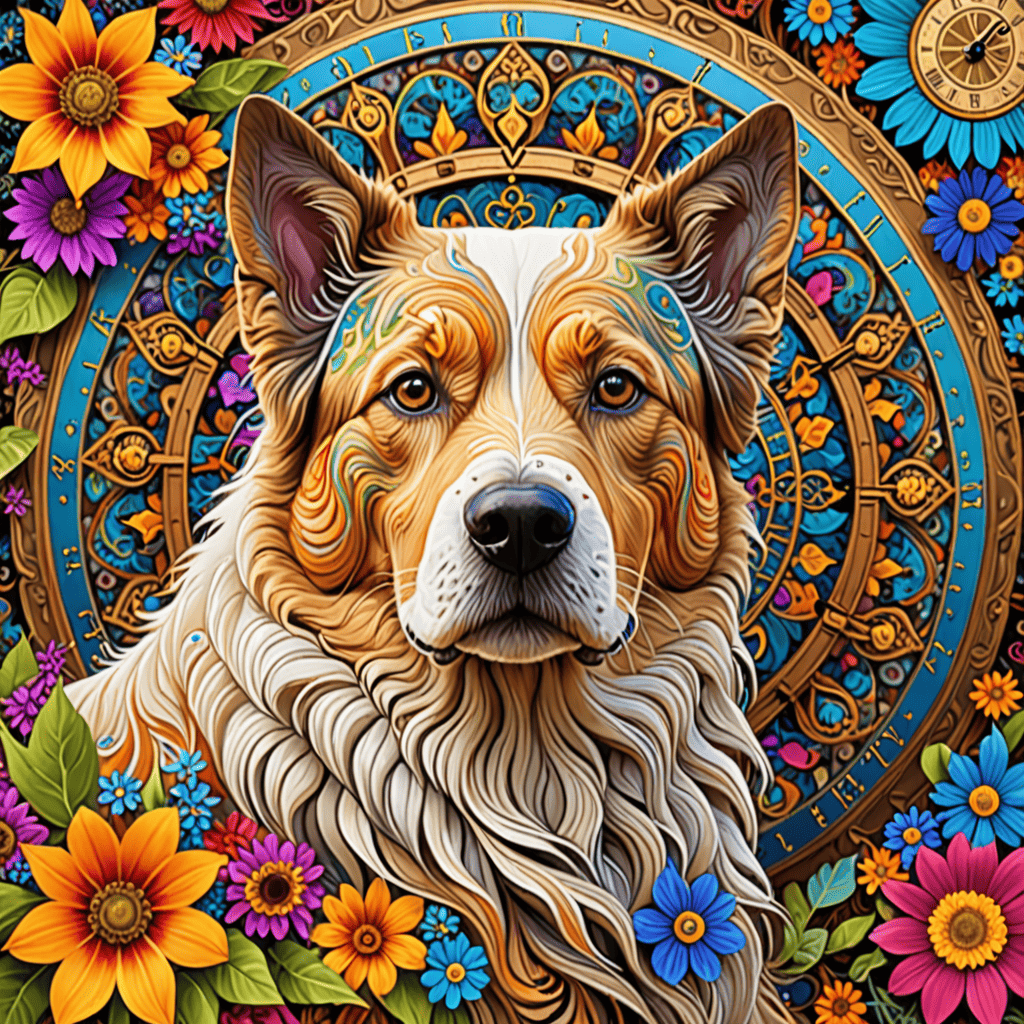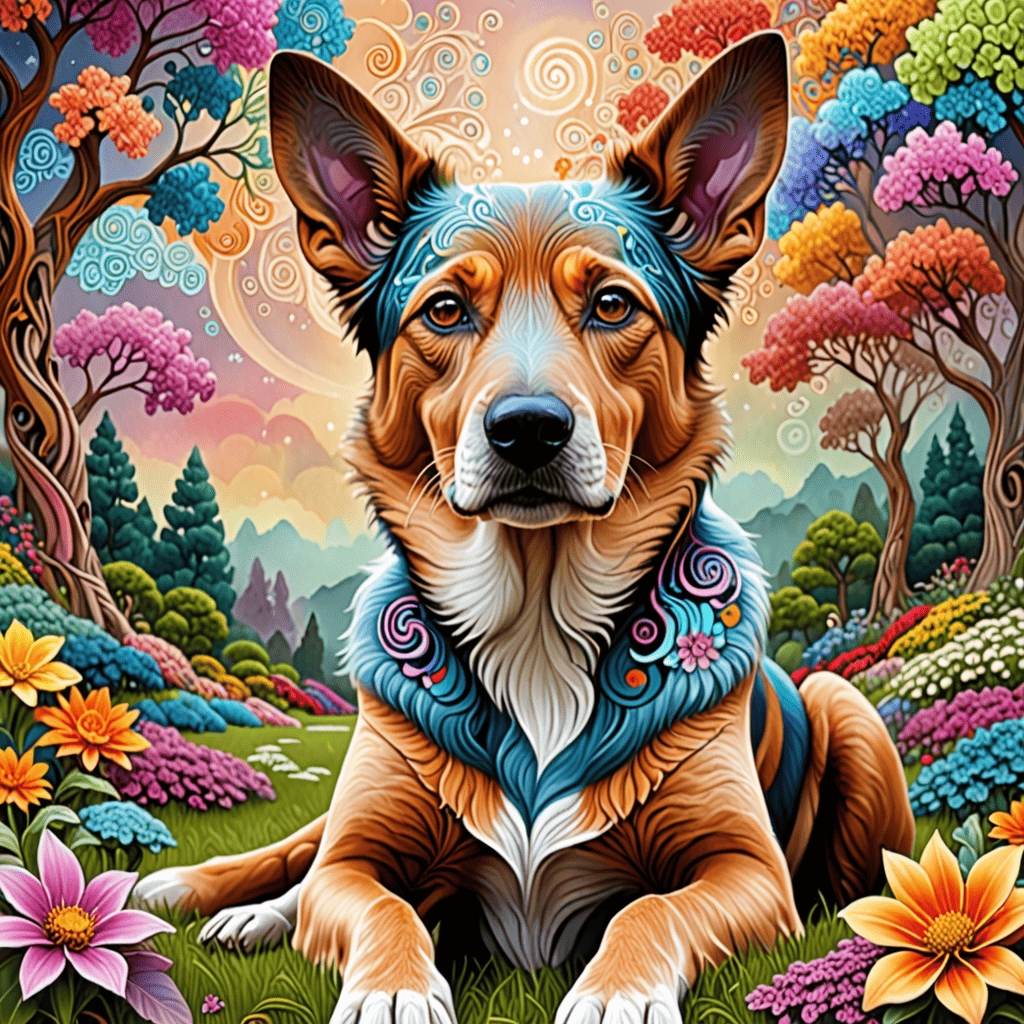Welcome to our comprehensive guide on the longest living dog, where we delve into the fascinating world of canine longevity. In this article, we will explore the breeds that boast remarkable lifespans, uncover the secrets behind the longest living dog breeds, and highlight the extraordinary stories of the oldest dogs in history, including the renowned Bobi, the oldest dog in the world. We will answer essential questions such as what breed of dog lives longest? and do any dogs live 30 years?, while also discussing the impact of health conditions like diabetes on a dog’s lifespan. Join us as we uncover the traits and care practices that contribute to a dog’s longevity, providing you with valuable insights to ensure your furry friend lives a long, healthy life.
What Breed of Dog Lives Longest?
Understanding which dog breed lives the longest involves examining various factors that contribute to canine longevity. Recent studies have shown that breed, size, sex, and facial structure significantly influence a dog’s lifespan. Research conducted by scientists in the UK analyzed 155 dog breeds and revealed key insights into longevity among different breeds.
Longest Living Dog Breed: Characteristics and Care
When considering the longest living dog breeds, several breeds stand out due to their remarkable lifespans and unique characteristics:
- Lancashire Heelers: Known for their agility and friendly nature, these dogs can live over 15 years.
- Tibetan Spaniels: These small, affectionate dogs often reach ages of 14 to 16 years.
- Shiba Inus: This spirited breed typically enjoys a lifespan of 12 to 15 years.
To ensure your dog reaches its maximum lifespan, it is essential to provide proper care. Regular veterinary check-ups, a balanced diet, and adequate exercise are crucial for extending a dog’s life. Incorporating wellness coaching for dogs, which focuses on nutrition and physical activity, can also contribute to a healthier, longer life.
Top 10 Longest Living Dog Breeds: A Comprehensive List
Here’s a comprehensive list of the top 10 longest living dog breeds:
- Lancashire Heeler
- Tibetan Spaniel
- Shiba Inu
- Chihuahua
- Australian Cattle Dog
- Pomeranian
- Yorkshire Terrier
- Beagle
- Miniature Schnauzer
- Jack Russell Terrier
Each of these breeds has unique traits that contribute to their longevity. For instance, smaller breeds like the Chihuahua and Pomeranian tend to live longer than larger breeds. Additionally, factors such as sex and health management play a significant role in determining how long a dog can live.
For more detailed insights into dog longevity, refer to studies published in veterinary journals and resources from organizations like the American Kennel Club and the ASPCA. These sources provide comprehensive data on breed characteristics and health management practices that can enhance the lifespan of our canine companions.

What is the longest living dog in the world?
Bobi: The Oldest Dog in the World
The longest living dog in the world is Bobi, who was born on May 11, 1992, and resides with the Costa family in Conqueiros, Portugal. In February 2023, Guinness World Records officially recognized Bobi as both the oldest living dog and the oldest dog ever recorded. Despite this remarkable achievement, some veterinarians and experts have expressed skepticism regarding Bobi’s age. An investigation into his age revealed that the microchip data was inconclusive, raising concerns since microchipping for dogs in Portugal only became mandatory in 2008.
Bobi’s owner attributes his dog’s extraordinary longevity to several factors, including a tranquil rural lifestyle, a balanced diet, and regular veterinary care. Research indicates that environmental factors, such as low stress levels and a healthy diet, can significantly contribute to a dog’s lifespan (American Kennel Club, 2021). For dog owners seeking to enhance their pets’ longevity, adopting wellness practices similar to those mentioned can be beneficial. This includes providing a nutritious diet, ensuring regular exercise, and maintaining routine veterinary check-ups. Additionally, creating a stress-free environment can further promote a dog’s overall well-being (PetMD, 2022).
In conclusion, while Bobi’s record is celebrated, it also highlights the importance of proper care and a healthy lifestyle in extending a dog’s life.
How old is the oldest dog? A Look at Bobi’s Life
Bobi, the world’s oldest dog, has lived an astonishing life, reaching the age of 30 years. This remarkable age raises the question: how old is the oldest dog? Bobi’s longevity can be attributed to various factors, including a diet rich in nutrients and a lifestyle that minimizes stress. His owner emphasizes the importance of a balanced diet, which is crucial for dogs with diabetes, as it can significantly impact their overall health and lifespan.
To understand what contributes to a dog’s long life, it’s essential to consider the longest living dog breeds. Breeds such as the Chihuahua, Dachshund, and Toy Poodle are known for their longevity, often living well into their late teens or even early twenties. However, Bobi’s case is exceptional, showcasing that individual care and lifestyle choices can lead to extraordinary lifespans.
As we reflect on Bobi’s life, it’s clear that maintaining a healthy lifestyle, regular veterinary visits, and a loving environment are key components in promoting longevity for all dogs. For those interested in learning more about enhancing their dog’s health, I recommend exploring resources on wellness topics and nutritional guidelines for pets.
What is the Oldest Breed of Dog Still Alive?
When discussing the oldest breed of dog still alive today, the Saluki stands out as a remarkable example. This breed, which originated in the Middle East, boasts a lineage that dates back over 4,000 years, making it a significant part of canine history. Salukis were revered by ancient Egyptians and are often depicted in their art, showcasing their importance in early civilizations. Their elegant appearance and hunting abilities have made them a cherished breed throughout history.
Oldest Dog Ever: Breeds with Remarkable Lifespans
Several breeds are known for their remarkable lifespans, contributing to their status as some of the longest living dog breeds. Here are a few notable examples:
- Basenji: Known as the “barkless dog,” this breed hails from Central Africa and has been around for thousands of years, often associated with hunting and companionship.
- Chow Chow: Originating from China, the Chow Chow is recognized for its distinctive lion-like appearance and has been part of Chinese culture for over 2,000 years.
- Shiba Inu: This Japanese breed is one of the oldest and smallest native breeds in Japan, with a history that can be traced back to 300 B.C.
- Akita Inu: Another ancient Japanese breed, the Akita Inu has a rich history as a hunting dog and was once a symbol of good health and long life.
- Tibetan Mastiff: This breed has been used by nomadic cultures in Tibet for centuries, serving as a guardian for livestock and property.
- Pharaoh Hound: With origins linked to ancient Egypt, the Pharaoh Hound is known for its striking appearance and hunting prowess.
- Irish Wolfhound: This breed has a long history in Ireland, where it was used for hunting wolves and other large game.
- Great Pyrenees: Known for its role as a livestock guardian, this breed has roots that trace back to the Pyrenees mountains in France and Spain.
- Dogo Argentino: Although a more modern breed, it has historical ties to the ancient dogs of South America.
Understanding the history and characteristics of these ancient breeds not only highlights their significance in human culture but also emphasizes the importance of responsible breeding and preservation efforts. For those interested in wellness coaching for life, incorporating a pet, especially a breed with such a rich history, can enhance emotional well-being and provide companionship, aligning with holistic health practices.
Longest Living Dog Species: Historical Insights
The longest living dog species often includes those breeds that have adapted well to various environments and have been cared for properly throughout their lives. Breeds like the Chihuahua and Pomeranian are also known for their longevity, often living well into their late teens. Factors contributing to their long lifespans include:
- Genetics: Certain breeds have inherited traits that promote longevity.
- Diet: A balanced diet tailored to the specific needs of the breed can significantly impact health and lifespan.
- Regular Veterinary Care: Routine check-ups and vaccinations help prevent diseases that could shorten a dog’s life.
- Exercise and Mental Stimulation: Keeping dogs active and engaged can lead to a healthier, longer life.
For more insights into dog care and wellness, consider exploring resources from the American Kennel Club and the ASPCA, which provide valuable information on maintaining the health of your beloved pets.
Do any dogs live 30 years?
Yes, some dogs can live to be 30 years old, although it is extremely rare. The record for the oldest dog is held by Bobi, who was born on May 11, 1992, and was verified to be 30 years and 266 days old as of February 1, 2023, by Guinness World Records through two Portuguese pet databases. While Bobi is currently the oldest verified dog, there may be other dogs worldwide that could potentially reach similar ages, but they have not been officially documented.
Longest living dog ever: Myths and Facts
The idea of dogs living to 30 years often sparks curiosity and skepticism. While Bobi’s remarkable age is a testament to the potential longevity of dogs, it is essential to understand the factors that contribute to such extended lifespans. Here are some myths and facts surrounding the longest living dog:
- Myth: All small dogs live longer than large dogs.
- Fact: While smaller breeds like Chihuahuas and Dachshunds often have longer lifespans, individual health and care play significant roles.
- Myth: A dog’s diet does not affect its lifespan.
- Fact: A balanced diet rich in nutrients, particularly antioxidants and omega fatty acids, can significantly enhance a dog’s health and longevity.
- Myth: Regular vet visits are unnecessary for healthy dogs.
- Fact: Routine veterinary care is crucial for early detection of health issues, which can lead to longer, healthier lives.
Dogs with the longest lifespan: Real-Life Examples
In addition to Bobi, several other breeds are known for their longevity. Here are some examples of dogs with the longest lifespan:
- Chihuahua: Often living up to 15-20 years, these small dogs are known for their vibrant personalities.
- Dachshund: With lifespans ranging from 12-16 years, Dachshunds are playful and affectionate companions.
- Poodle: Standard, miniature, and toy poodles can live between 12-15 years, making them a popular choice for families.
- Beagle: Beagles typically live around 12-15 years and are known for their friendly nature.
- Australian Cattle Dog: This breed is known for its intelligence and can live up to 15 years or more.
For more insights on promoting canine longevity, consider exploring resources from veterinary professionals and organizations such as the American Kennel Club and the American Veterinary Medical Association. These organizations provide valuable information on dog care and health management.

What Pet Has the Longest Lifespan?
When considering the longest living dog, it’s essential to compare their lifespan with other pets. While dogs can live up to 20 years, certain pets surpass this age significantly. For instance, the black coral holds the record for the longest lifespan, living up to 5,000 years. Among commonly kept pets, the Aldabra giant tortoise can live for over 150 years, making it one of the longest-living species. Other notable long-lived pets include:
- Cockatoos: These birds can live between 60 to 70 years in captivity, with the oldest recorded cockatoo, named Cookie, reaching 83 years.
- Ocean Quahogs: These clams are known for their longevity, living up to 225 years.
- Rougheye Rockfish: This fish species can live for over 200 years.
- Cats: With proper care, domestic cats can reach their late teens or even early twenties.
- Elephants: In the wild, elephants can live to be over 70 years old.
For pet owners interested in maximizing their pets’ lifespan, adopting wellness coaching principles can be beneficial. This includes providing a balanced diet, regular veterinary check-ups, and mental stimulation, which are essential for promoting longevity and overall health in pets.
Comparison of Dog Lifespan with Other Pets
When we look at the longest living dog breeds, we find that they often have lifespans that can compete with other pets. For example, the Chihuahua and the Dachshund are known for their longevity, often living into their late teens. However, they still fall short compared to the remarkable lifespans of tortoises and certain birds. Understanding these differences can help pet owners make informed decisions about their pets’ care and lifestyle.
Dogs with Diabetes: Life Expectancy and Care
Diabetes in dogs can significantly affect their life expectancy. Diabetic dogs require careful management of their diet and regular veterinary visits to monitor their condition. The lifespan of a diabetic dog can vary, but with proper care, many can live a full life. Signs your dog with diabetes is dying may include severe lethargy, loss of appetite, and changes in behavior. It’s crucial to recognize these signs early and consult a veterinarian for guidance on managing diabetes effectively.
What is the Smartest Dog?
The smartest dog breeds are often recognized for their exceptional intelligence, trainability, and ability to understand human commands. Understanding which dog lives the longest can also be influenced by their intelligence, as smarter breeds tend to have better care and training, potentially leading to longer lifespans. Here are some of the top contenders:
- Border Collie
– Renowned for their herding instincts, Border Collies are highly intelligent and excel in obedience and agility competitions. They can learn new commands in as little as five repetitions and are known for their problem-solving abilities. - Poodle
– Available in standard, miniature, and toy sizes, Poodles are not only eager to please but also highly trainable. Their intelligence makes them excellent service dogs, thriving in various canine sports. - German Shepherd
– Known for their loyalty and courage, German Shepherds are often used in police and military roles due to their ability to learn complex tasks and commands. They are also excellent family pets, displaying protective instincts and intelligence. - Golden Retriever
– Golden Retrievers are friendly, intelligent, and devoted. They are highly trainable and often serve as therapy and assistance dogs, showcasing their ability to understand and respond to human emotions. - Doberman Pinscher
– Dobermans are known for their loyalty and intelligence. They are quick learners and excel in obedience training, making them excellent guard dogs and companions. - Shetland Sheepdog
– This breed is known for its intelligence and ability to learn commands quickly. Shetland Sheepdogs are also sensitive to human emotions, making them great companions. - Labrador Retriever
– Labradors are not only friendly and outgoing but also highly trainable. They are often used as service dogs due to their intelligence and eagerness to work.
How Intelligence Affects the Longevity of Dogs
Intelligence in dogs can significantly impact their overall health and longevity. Smarter breeds often adapt better to training and care, which can lead to healthier lifestyles. For instance, dogs that are trained to follow commands are less likely to engage in dangerous behaviors, reducing the risk of accidents. Additionally, intelligent dogs are more likely to receive mental stimulation, which is essential for their well-being.
Moreover, breeds like the American Kennel Club highlight that dogs with higher intelligence often have better social skills, leading to healthier interactions with humans and other animals. This socialization can contribute to a lower stress level, which is beneficial for dogs with diabetes or other health issues, ultimately influencing their lifespan.
In conclusion, understanding the connection between a dog’s intelligence and its longevity can help pet owners make informed decisions about training and care, ensuring that their furry companions live long, healthy lives.
Conclusion: Insights on the Longest Living Dogs
Understanding the factors that contribute to the longevity of our canine companions is essential for any pet owner. The longest living dog breeds often share specific characteristics that not only enhance their lifespan but also improve their overall quality of life. By focusing on proper care, nutrition, and regular veterinary check-ups, we can help our dogs live longer, healthier lives.
Recap of the longest living dog breeds and their care
Some of the longest living dog breeds include the Chihuahua, Dachshund, and Toy Poodle, known for their resilience and adaptability. Each breed has unique care requirements that can significantly impact their lifespan. For instance, diabetic dogs require special attention to their diet and exercise routines to manage their condition effectively. Regular check-ups with a veterinarian can help monitor health issues that may arise with age, ensuring that your furry friend remains healthy and happy.
Future of canine longevity: Research and Developments
As veterinary medicine advances, new research continues to emerge regarding the longest living dog species. Innovations in nutrition, genetics, and preventive care are paving the way for longer lifespans in dogs. For example, studies on diabetes in dogs are helping to improve the life expectancy of diabetic dogs through better management strategies. Additionally, the impact of diet on longevity is being explored, with options like vegan diets for dogs gaining popularity. Understanding these developments can empower pet owners to make informed decisions that enhance their dog’s quality of life.













